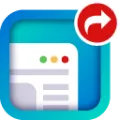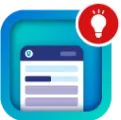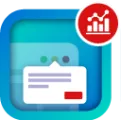Organize Reports
- Search for Reports and Dashboards from the Reports Tab in Salesforce ClassicWhen using the report and dashboard search, look for a report by name, description, or who created it or modified it last. Filter, sort, or search within a selected folder to refine your results.
- Get the Information You Need From the Reports Tab List ViewTo see the information you want to see about your reports, you can resize, hide, reorder, sort columns, and select the number of records to display in your list view on the Reports tab.
- Customize Report and Dashboard Lists in Lightning ExperienceYou can customize the columns in the list on the Reports or Dashboards tab.
- Rename a ReportWhat’s in a name? A report by any other name still answers your business questions. Whenit’s time to change the name of a report, do so from report properties.
- Describe a ReportGive your report a description to help people (and yourself) distinguish it.
- Print a ReportPrint a report from the run page of a report using your browser’s print function.
- Keep Favorite Report Folders In ViewPin your most-used report and dashboard folders to the top of the folder list so you don’t have to scroll down every time you need them.
- Hide Unused Report TypesIf your users use only a subset of the available standard report types, you can hide theones they don’t need.
- Run Reports in the BackgroundRun large reports in the background so you can keep working in Salesforce without waiting for results to display. This is a good way to run data-intensive reports that might otherwise time out due to the large number of report results.
- Deliver Your ReportTo get the information in your report to the people who need it, you can share the report’s URL, make the report available for Chatter feeds, or export the data toanother tool, such as Excel. You can also set the report to run on a schedule so that viewers always have the latest information.
- Embedded Report ChartsTypically, users have had to navigate to the Reports tab to find data. But you can give them valuable information directly on the pages they visit often. To do that, embed report charts in detail pages for objects. When users see charts on pages, they are empowered to make decisions based on the data they see in the context of the page without going elsewhere. For example, an opportunity record shows important data directly on its detail page.
- Delete a ReportYou can delete a selected report from the Reports tab or from its run page.





